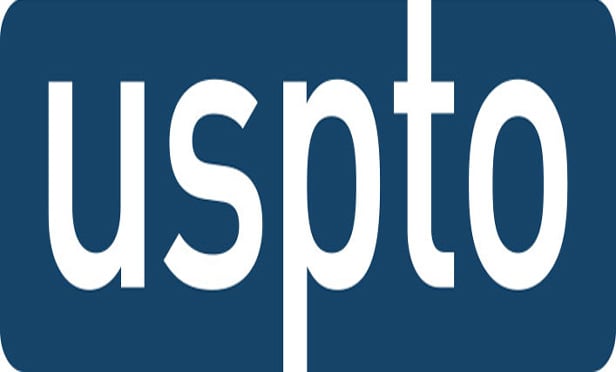Columns & Departments

IP News
Nike Seeks $150 Million In Sanctions from Six Chinese Banks, and Loses
Features

USPTO Looking to Beef Up Its Own Trademark Protection
The agency announced that the Department of Commerce has applied to register the USPTO's marks in a bid to crack down on scammers who are impersonating the agency.
Features

New Report Finds Declines In Copyright, Trademark Suits
Copyright lawsuit filings declined significantly over the last two years, according to a new report by Lex Machina, which found that overall cases had dipped from a 2018 peak that was driven primarily by surges in file-sharing litigation.
Features

Counterfeiting vs. Infringement: Second Circuit Weighs In
In two recent cases, the Second Circuit provided guidance as to the circumstances that may give rise to liability for counterfeiting, as distinct from mere infringement, and addressed liability for contributory infringement for counterfeiting.
Features

Not Your Property, Your Business: When Customized Products Become the Business of Rights Holders and Courts
In some instances the appearance of third-party intellectual property on items purchased, owned and customized by the purchaser may be legal under the doctrines of first sale and fair use.
Features

New COVID Relief Bill Brings Changes to Trademark and Copyright Practice
The new, more than 5,000-page spending bill, which includes the latest COVID-19 relief, had a few surprises under its cover. Two of those surprises focus directly on intellectual property and amount to sea changes in the trademark and copyright infringement realms.
Features

Unseating Inelegant Notions of Product Design Functionality
In Blumenthal Distributing, Inc. v. Herman Miller, Inc., the 9th Circuit considered whether or not the or not the best-selling piece of furniture ever is functional.
Features

Global Perspective On Filing Trademark Registrations
The entertainment industry is a global business, but many U.S. brand owners do not realize that their valuable trademark rights stop at the U.S. border.
Features

Deciphering the USPTO's Material Alteration Standard for Amending Marks
As brands mature over time, their owners often seek to update marks that are subject to a federal registration or registration application. In some cases, the impetus for the amendment may be deliberately to freshen, tweak, or otherwise modernize the subject mark. In other cases, brand owners may recognize after the fact that their current usage of a mark does not match the mark as originally registered or applied for.
Features

Testing for Genericness After USPTO v. Booking.com
In the recent U.S. Supreme Court case of USPTO v. Booking.com, the U.S. Supreme Court held that the term Booking.com is not necessarily generic merely because it is composed of two components, each itself generic. In so deciding, Justice Ginsburg averred that there is an appropriate metric to determine if such a term is indeed generic, that of consumer perception.
Need Help?
- Prefer an IP authenticated environment? Request a transition or call 800-756-8993.
- Need other assistance? email Customer Service or call 1-877-256-2472.
MOST POPULAR STORIES
- The 'Sophisticated Insured' DefenseA majority of courts consider the <i>contra proferentem</i> doctrine to be a pillar of insurance law. The doctrine requires ambiguous terms in an insurance policy to be construed against the insurer and in favor of coverage for the insured. A prominent rationale behind the doctrine is that insurance policies are usually standard-form contracts drafted entirely by insurers.Read More ›
- A Lawyer's System for Active ReadingActive reading comprises many daily tasks lawyers engage in, including highlighting, annotating, note taking, comparing and searching texts. It demands more than flipping or turning pages.Read More ›
- The Brave New World of Cybersecurity Due Diligence in Mergers and Acquisitions: Pitfalls and OpportunitiesLike poorly-behaved school children, new technologies and intellectual property (IP) are increasingly disrupting the M&A establishment. Cybersecurity has become the latest disruptive newcomer to the M&A party.Read More ›
- Abandoned and Unused Cables: A Hidden Liability Under the 2002 National Electric CodeIn an effort to minimize the release of toxic gasses from cables in the event of fire, the 2002 version of the National Electric Code ("NEC"), promulgated by the National Fire Protection Association, sets forth new guidelines requiring that abandoned cables must be removed from buildings unless they are located in metal raceways or tagged "For Future Use." While the NEC is not, in itself, binding law, most jurisdictions in the United States adopt the NEC by reference in their state or local building and fire codes. Thus, noncompliance with the recent NEC guidelines will likely mean that a building is in violation of a building or fire code. If so, the building owner may also be in breach of agreements with tenants and lenders and may be jeopardizing its fire insurance coverage. Even in jurisdictions where the 2002 NEC has not been adopted, it may be argued that the guidelines represent the standard of reasonable care and could result in tort liability for the landlord if toxic gasses from abandoned cables are emitted in a fire. With these potential liabilities in mind, this article discusses: 1) how to address the abandoned wires and cables currently located within the risers, ceilings and other areas of properties, and 2) additional considerations in the placement and removal of telecommunications cables going forward.Read More ›
- Guidance on Distributions As 'Disbursements' and U.S. Trustee FeesIn a recent case from the Bankruptcy Court for the District of Delaware, In re Paragon Offshore PLC, the bankruptcy court provided guidance on whether a post-plan effective date litigation trust's distributions constituted disbursements subject to the U.S. Trustee fee "tax."Read More ›
